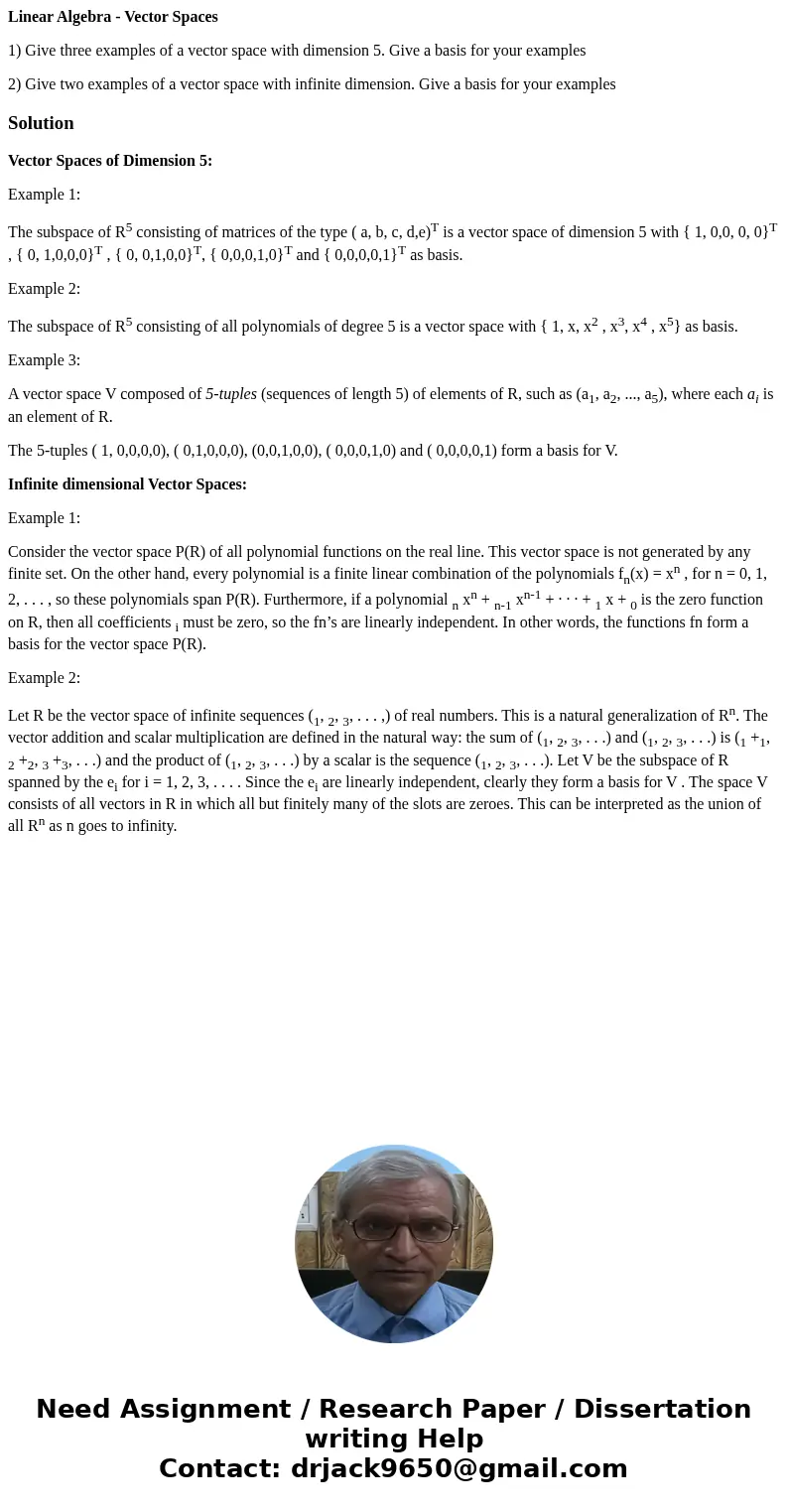Linear Algebra Vector Spaces 1 Give three examples of a vec
Linear Algebra - Vector Spaces
1) Give three examples of a vector space with dimension 5. Give a basis for your examples
2) Give two examples of a vector space with infinite dimension. Give a basis for your examples
Solution
Vector Spaces of Dimension 5:
Example 1:
The subspace of R5 consisting of matrices of the type ( a, b, c, d,e)T is a vector space of dimension 5 with { 1, 0,0, 0, 0}T , { 0, 1,0,0,0}T , { 0, 0,1,0,0}T, { 0,0,0,1,0}T and { 0,0,0,0,1}T as basis.
Example 2:
The subspace of R5 consisting of all polynomials of degree 5 is a vector space with { 1, x, x2 , x3, x4 , x5} as basis.
Example 3:
A vector space V composed of 5-tuples (sequences of length 5) of elements of R, such as (a1, a2, ..., a5), where each ai is an element of R.
The 5-tuples ( 1, 0,0,0,0), ( 0,1,0,0,0), (0,0,1,0,0), ( 0,0,0,1,0) and ( 0,0,0,0,1) form a basis for V.
Infinite dimensional Vector Spaces:
Example 1:
Consider the vector space P(R) of all polynomial functions on the real line. This vector space is not generated by any finite set. On the other hand, every polynomial is a finite linear combination of the polynomials fn(x) = xn , for n = 0, 1, 2, . . . , so these polynomials span P(R). Furthermore, if a polynomial n xn + n-1 xn-1 + · · · + 1 x + 0 is the zero function on R, then all coefficients i must be zero, so the fn’s are linearly independent. In other words, the functions fn form a basis for the vector space P(R).
Example 2:
Let R be the vector space of infinite sequences (1, 2, 3, . . . ,) of real numbers. This is a natural generalization of Rn. The vector addition and scalar multiplication are defined in the natural way: the sum of (1, 2, 3, . . .) and (1, 2, 3, . . .) is (1 +1, 2 +2, 3 +3, . . .) and the product of (1, 2, 3, . . .) by a scalar is the sequence (1, 2, 3, . . .). Let V be the subspace of R spanned by the ei for i = 1, 2, 3, . . . . Since the ei are linearly independent, clearly they form a basis for V . The space V consists of all vectors in R in which all but finitely many of the slots are zeroes. This can be interpreted as the union of all Rn as n goes to infinity.

 Homework Sourse
Homework Sourse